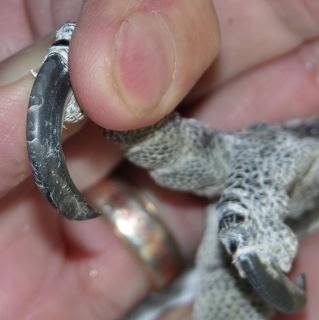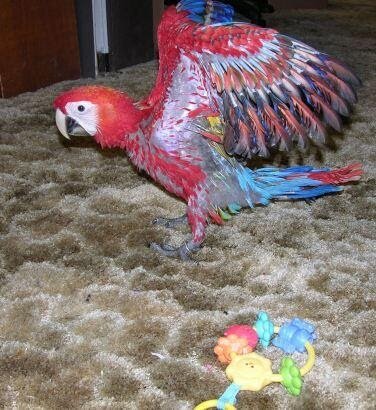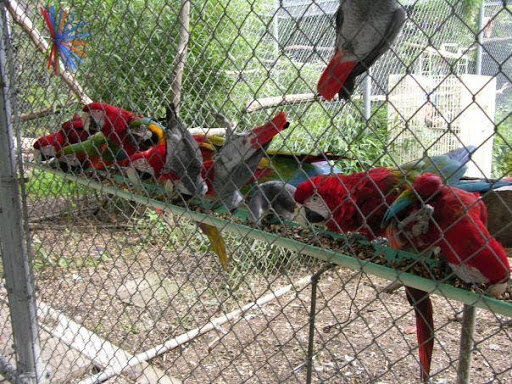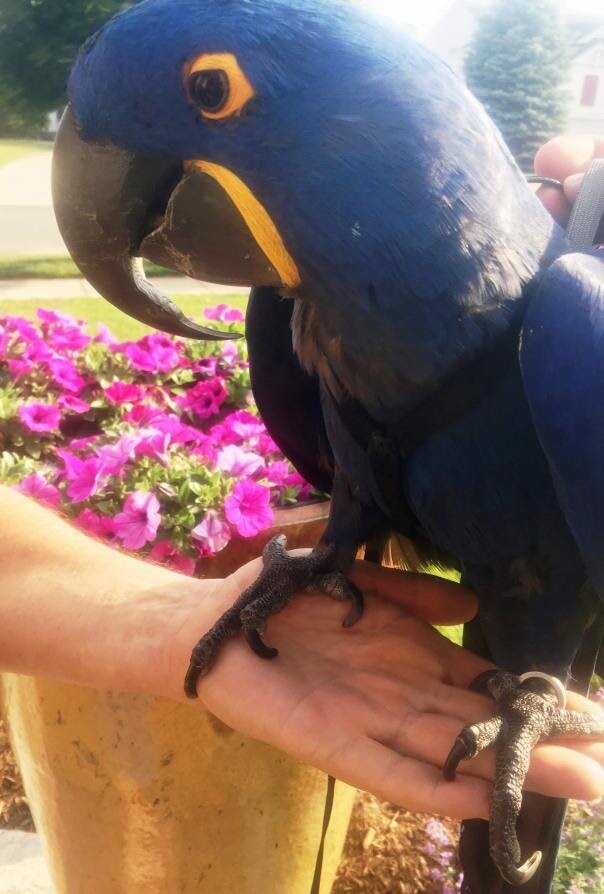Parrot Nail Care
Animal care is not always obvious. This article is in regards to a situation many pet birds find themselves in at some point in their lives.
Parrots in the wild walk on occasion but most of their movement is by flight. Captivity is just the opposite where pet birds find themselves in an environment that significantly changes the way they have been designed to operate for millions of years. Not that this is completely bad because we all make concessions when we move from the country to the city. Humans are designed for life in the wild but give up a few needs to benefit from the captivity of the city. Pet parrots find themselves in the same situation. Most baby parrots do not survive in the wild while most do in captivity. The first time a wild parrot gets sick or injured they will likely die therefor average life expectancy is about 25% of their captive relatives. Regardless of the plight of most pet parrots generally enjoy a much longer life than their wild counterparts.
Flight is much more efficient and healthy than walking but limited in most pet birds’ lives. Given that walking takes second seat to flying it is important that we optimize this unnatural method of locomotion for our friends.
A fully flighted Catalina Macaw cannot take off and land properly if they need to be concerned about long toenails catching on things.
Toenails that are not properly groomed are at a minimum annoying and in some cases very dangerous for pet birds. These dangers can be classified in two groups; Physical and Psychological.
Physical dangers range from annoying to death. Sharp nails can get caught on toys, stuck in crevasses, make it uncomfortable to stand on perches, and difficult to move along the bars of a cage. Many parrots are missing toes and toe nails after they were twisted off after getting caught. The basic problem is twofold. First, it is just uncomfortable when you toes do not set correctly on surfaces. Second, the long and sharp points grab onto and get caught on things. I have seen many parrots that find it impossible to walk across carpet and even more that find it very difficult to move along the bars of their cage because they cannot retract their nails far enough to release them from the bars. In my own experience with over 5,900 parrots in 32 years I have seen birds hung and dead because they got toe nails stretched too far apart to release from the cage wire, and a few others killed in flock situations when they could not move away from an aggressive bird. The more nervous a bird gets when afraid the more dangerous the problem can be.
Psychological dangers primarily develop at a young age and the damage can last a lifetime, and generally cannot be reversed.
Freely exploring your environment is not easy if your toenails are always holding you back.
Any time ours or our birds young body does not develop and progress the way nature intended there is some frustration that can develop into physical and mental disabilities. The best example that will cover a wide range of situations is the need for a young animal to be able to ‘retreat and approach’ new situations. In humans this can be seen when a child hides behind moms’ leg when he feels danger. This thought is fleeting but very important to allow a few seconds of security while the child decides if the situation is safe. Being a prey species this option is hundreds of times more important. They only need to move a short distance for a few seconds in most situations but they need to be able to do it with confidence that they can find safety if necessary. It only takes a few microseconds of extra effort and delay to create a danger signal to the brain. And it only takes a few repeated experiences to convince our brain to subliminally keep us out of the situation in the future. Until a baby parrot reaches adolescences their job is to continue to explore everything in the world so the accumulating psychological damage is not obvious. But at the onset of adolescences the baby would be spending less time with their parent and become responsible for their own survival. This is the time when the unnoticed abuse will be presented in a phobic and schizophrenic personality.
It is easy to raise a parrot to distrust people just by not clipping toenails. All of us, especially at a young age know when someone around us is acting out of character. Abnormal, out of character behavior, causes at least a monetary fear response in all young parrots. Put a parrot with sharp toe nails on your friends arm and they will act out of character from the pain. This will result in your bird avoiding the uncomfortable situation. The uncomfortable human is unavoidably presenting their uncomfortable selves as a predator because their body language becomes unpredictable just like a predator. It only takes a few well-meaning friends at the right stage of life to convince a parrot’s brain to stay clear of most human hands. Usually the human is unaware of the developing problem and continues to try and convince the parrot to step onto your friend which makes the situation even worse for the bird.
Ponder this a bit and you will see ungroomed toenails are only the tip of the iceberg in explaining many behaviors of adult pet parrots.
So let’s mount a campaign to promote proper grooming.
Baby parrots start life with needle sharp toenails. Mostly for defense from predators, holding onto the nest site, and latching onto landing surfaces when learning to fly. At about 4 weeks we file all toenails with an emery board. We only need to do this one time in their life. If a bird is flighted, active, and has a few appropriately placed abrasive perches they will never need their nails trimmed again.
Hartman Aviary wants to provide a high quality flock experience for their birds when they are not breeding. It is rare in aviculture to find any aviary that can house large numbers of breeder birds in a flock.
Grouping a large number of ex pet parrots together in a flock is a difficult process at best, and impossible if any of the birds have long toenails. As long as all of the birds can fly, and their toenails are short enough for them to fly and land comfortably, they will learn to get along. Any bird that feels the need to get away from another bird and cannot because his nails do not release fast enough will quickly decide he needs to act defensive. The approaching bird may not understand why the frightened birds is acting scared but decides he needs to defend himself, and a distrust develops that has a negative effect on the entire flock.
This Macaw is developing long term physical issue from toenail abuse. This bird has had long nails for so long the toes do not even try to straighten out properly.
Long toenails on this male Hyacinth Macaw can make breeding uncomfortable and result in lots of infertile eggs.






